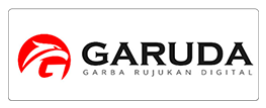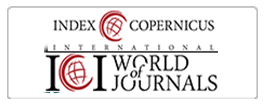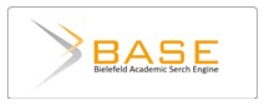Mengungkap Potensi Fraud Dan Upaya Pencegahannya Di Perusahaan X
DOI:
https://doi.org/10.22219/jaa.v5i3.21101Keywords:
Control Systems, Financial Statement, FraudAbstract
Any weakness of a control in the company will have the potential for fraud. Those who have more ability to take advantage of this gap will benefit from their actions. Weaknesses of a control, error of recording to incomplete supporting evidence can be the cause of potential fraud. The object of the study is Unit S in Company X. This study provides results that there is still weak control in Unit S, and there are still many recording errors that are not based on fundamental evidence in presenting figures on financial statements. That is, it has the potential to cause fraud in Unit S. fraud which is most worried is the existence of fraud in terms of profit management. Some prevention that can be done is to change or improve the existing control system and complete the supporting evidence in the next period. This research is expected to be a suggestion for companies to be more careful and immediately correct the weaknesses that occur, so that this does not become the cause of potential fraud in the company in the future.
Downloads
References
Abdullahi, R. U. (2015). Fraud Triangle Theory, and Fraud Diamond Theory. Understanding the Convergent, and Divergent for Future Research. International Journal of Academic Research in Accounting, Finance and Management Sciences: 5(4), 38-45. https://doi.org/10.6007/IJARAFMS/v5-i4/1823
ACFE (2012). Report to the Nations: Occupational Fraud and Abuse.
ACFE (2014). Report to the Nations: Occupational Fraud and Abuse.
ACFE (2016). Report to the Nations: Occupational Fraud and Abuse.
Albrecht, W. S., et al. (2012). Fraud Examination, 5E. Boston: Cengage Learning.
Artati, A. K. and S. Noviyanti (2020). Fraud Risk Assessment: Experimental Study On The Alternative Fraud Model And Auditor Risk Preferences. Jurnal Reviu Akuntansi dan Keuangan 10 (1), 21 - 37. https://doi.org/10.22219/jrak.v10i1.11430
Asya'ri, M. A., et al. (2013). "Peran dan Fungsi Satuan Pengawasan Intern dalam Pencegahan Fraud pada Perguruan TInggi X " Journal of Auditing, Finance, and Forensic Accounting, 1(2), 99-112. https://doi.org/10.21107/jaffa.v1i2.4005
Cressey, D. R. (1953). Other's People Money : A Study of The Social Psychology of Embezzlement . Mountclair, New Jersey : Glenceo III, Free Pass.
Creswell, J. W. (1998). Qualitative Inquiry and Research Design: Choosing Among Five Tradition London: Sage Publications.
Creswell, J. W. (2012). Research Design: Pendekatan Kualitatif, Kuantitatif, dan Mixed. Yogyakarta: Pustaka Pelajar.
Damayanti, R. and A. N. S. Hapsari (2021). Three Lines Of Defense Sebagai Respon Atas Fraud Dan Upaya Pencapaian Sustainable Development Goals Desa. Jurnal Akademi Akuntansi 5 (1), 102-120. https://doi.org/10.22219/jaa.v5i1.18844
Haryadi, B. (2018). Mengungkap Rahasia Dibalik Angka Pendapatan (Metode Studi Kritis). Jurnal Ekonomi dan Keuangan , 2(2), 143-164. https://doi.org/10.24034/j25485024.y2018.v2.i2.3937
Kasmir (2013). Analisis Laporan Keuangan. Jakarta: Raja Grafindo Persada.
Kuswarno, E. (2009). Metodelogi Penelitian Komunikasi Fenomenologi: Konsepsi Pedoman dan Contoh Penelitian. Bandung: Widya Padjajaran.
Marks, J. (2012). The Mind Behind The Fraudsters Crime: Key Behavioral And Environmental Elements.
Martias, A. (2018). Analisa Dampak Lemahnya Pengendalian Internal Sentra Kas PT.ALKHA atas Pilot Project Pengelolaan CDM Potensi Fraud. Seminar Nasional Inovasi dan Tren (SNIT), 2108, 1-8.
Miles, M. B., et al. (1992). Analisis Data Kualitatif: Buku Sumber Tentang Metode Metode Baru. Jakarta: UI Press.
Moleong, L. J. (2012). Metodolgi Penelitian Kualitatif. Bandung : PT. Remaja Rosdakarya.
Moleong, L. J. (2014). Metode Penelitian Kualitatif. Bandung : Rosdakarya.
Prawira, et al. (2014). Pengaruh Moralitas Individu, Asimetri Informasi dan Efektivitas Pengendalian Internal terhadap Kecenderungan Kecurangan (Fraud) Akuntansi (Studi Empiris pada Badan Usaha Milik Daerah Kabupaten Buleleng). Jurnal Ilmiah Mahasiswa Akuntansi Undiksha, 2(1). https://doi.org/10.23887/jimat.v2i1.3434
Skousen, J. C., et al. (2009). Detecting and Predicting Financial Statement Fraud: The Effectiveness of the Fraud Triangle and SAS No. 99. Advances in Financial Economics, 13, 53-81. https://doi.org/10.1108/S1569-3732(2009)0000013005
Sugiyono (2017). Metode Penelitian Kualitatif: Untuk penelitian yang bersifat: eksploratif, enterpretif, interaktif, dan konstruktif. Bandung : Alfabeta
Downloads
Published
Issue
Section
License
Copyright (c) 2022 Priyo Budi Prakoso, Bambang Haryadi, Oyong Lisa

This work is licensed under a Creative Commons Attribution-NonCommercial-ShareAlike 4.0 International License.
Jurnal Akademi Akuntansi is licensed under a Creative Commons Attribution-NonCommercial-ShareAlike 4.0 International License.
Authors who publish with this journal agree to the following terms:
- Authors retain copyright and grant the journal right of first publication with the work simultaneously licensed under a Creative Commons Attribution-NonCommercial-ShareAlike 4.0 International License that allows others to share the work with an acknowledgment of the work's authorship and initial publication in this journal.
- Authors are able to enter into separate, additional contractual arrangements for the non-exclusive distribution of the journal's published version of the work (e.g., post it to an institutional repository or publish it in a book), with an acknowledgment of its initial publication in this journal.
- Authors are permitted and encouraged to post their work online (e.g., in institutional repositories or on their website) prior to and during the submission process, as it can lead to productive exchanges, as well as earlier and greater citation of published work (See The Effect of Open Access).
Jurnal Akademi Akuntansi dilisensikan di bawah lisensi Creative Commons Attribution-NonCommercial-ShareAlike 4.0 International.
Penulis yang menerbitkan artikel di jurnal ini menyetujui ketentuan berikut:
- Penulis mempertahankan hak cipta dan memberikan hak jurnal atas publikasi pertama dengan karya yang secara serentak dilisensikan di bawah Lisensi Pengaitan Creative Commons yang memungkinkan orang lain untuk berbagi karya dengan pengakuan atas karya penulis dan publikasi awal dalam jurnal ini.
- Penulis dapat masuk ke dalam pengaturan kontrak tambahan yang terpisah untuk distribusi non-eksklusif versi karya jurnal yang diterbitkan (misalnya, mempostingnya ke repositori institusional atau mempublikasikannya dalam sebuah buku), dengan pengakuan publikasi awalnya di jurnal ini.
- Penulis diizinkan dan didorong untuk memposting pekerjaan mereka secara online (misalnya, di repositori institusional atau di situs web mereka) sebelum dan selama proses pengajuan, karena dapat mengarah pada pertukaran produktif, serta kutipan pekerjaan sebelumnya dan yang lebih besar (Lihat Pengaruh Akses Terbuka).
























